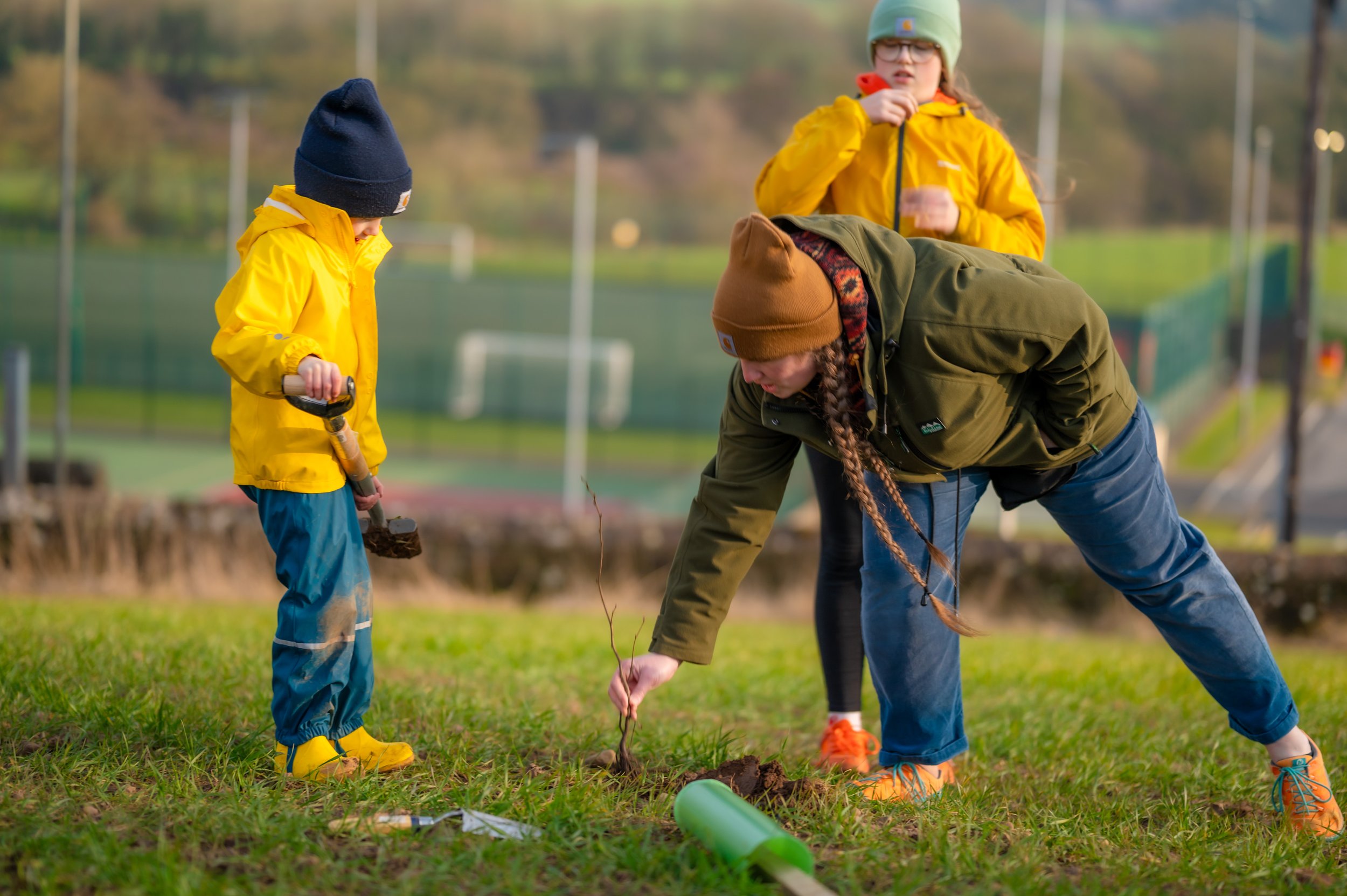Camp Farm

DATE:
2023 / 2024
LOCATION:
Camp Farm, Maryport, Cumbria
PARTNERS:
Cultura Trust
People Plant Trees
Case studies >> Camp Farm
From Victorian farm to learning resource
Aims
Establish native woodlands on currently underutilised patches of the farm (1.4ha).
Create opportunities for immediate and ongoing engagement with local school children and members of the community through planting/maintentance days etc.
Create habitat corridors and increase biodiversity with a diverse mixture of native species planted.
Create future green/woodworking opportunities with establishment of coppice with standards.
Camp Farm in Maryport is a 140-acre mixed arable and pastoral farm holding that is owned by The Cultura Trust with tenanted ground to local farmers. The Trust wants to improve the biodiversity of the site so that in time, it can become a learning resource for the community.
The Raise team have supported the Trust to co-design a scheme that includes native, broadleaf planting, shelterbelts of scrub planting to bolster existing hedgerows and wet woodland planting, as well as a future pond creation. The planting of sweet chestnut and hazel coppice with standards is central to the scheme to create opportunities for future green woodworking, education / engagement, and sustainable timber production for local markets.
Identified initially through Cumbria Woodlands Advisory Service, the site has been an interesting and unusual prospect for the Raise team.
The site houses a historically important Victorian farm which is owned by a charitable trust. Although no longer a working farm, the land is tenanted to local farmers for arable and pastoral use. The Raise team have worked with the landowner (Cultura Trust) throughout the process, providing funding, guidance, and support. They have also assisted with community engagement activities including neighbour consultation through the EIA process, resulting in design refinement.
Benefits to the wider community include the opportunity to engage with planting days, enabling them to contribute to climate mitigation activities, improve local biodiversity and support personal health and wellbeing. The Trust have also worked with several local neighbouring schools (infant, primary and secondary) inviting them to the site to engage in tree planting to support current curriculum-based learning. They have also co-designed a long-term project focusing on countryside care using woodland creation as the catalyst. The schools will return to the planting site at regular intervals to see how the area has developed. The Trust has also developed relationships with the local community centre to run willow weaving activities and will be involved in the forthcoming lantern parade, utilising the willow that has been planted as part of this scheme.
One of the standout economic benefits from the project is the diversification of the farm and the future timber income.
2050 trees have been planted on the site comprising native mixed broadleaf trees and scrub (hazel, hawthorn, guelder rose, elder, hornbeam, sessile oak, downy birch, aspen, alder, willows) with broad leaf productive trees also included (sweet chestnut, beech).
350m of stock netting has also been erected, installing 5 field gates to protect planting from stock and to allow easy access for the farmer into fields for agri-management.
A support budget has been incorporated to allow future return community engagement days to help look after the trees as they grow.
112
Volunteers
2050
Number of trees
1.4
Hectares of woodland planted
Project Impact
Contribution to Net Zero:
Establishment of native mixed broadleaf woodlands and scrub, increasing carbon sequestration and storage.
2050 trees planted (equivalent of 1.4 hectares of woodland) across a 140-acre site.
Public access and community engagement:
Volunteer groups, community members and local schools involved in planting and maintenance days.
112 people from primary school age to over 70s.
Health and Wellbeing:
Volunteer groups and local schools involved with maintenance, involving 112 individuals in the establishment of a new community forest site.
Woodland and parkland-style planting will link up surrounding mature woodland.
Education and skills:
Employment of contractors in fencing and in coordination of planting new woodland with volunteers.
Opportunity for engagement on site through the teaching of traditional woodcraft skills.
This will include education on traditional woodland management and production of primary industry materials from coppice and standards.
Nature and Biodiversity:
Creating diverse wooded habitats, bolstering existing nature corridors and planting a diverse mixture (12 species) of native and naturalised trees and shrubs.




